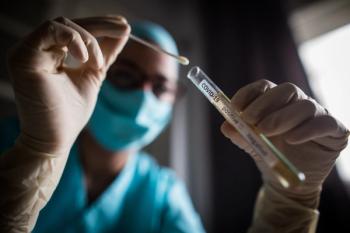
ADA 2020: Pharmacists Can Improve Diabetes Outcomes in Rural Settings
An analysis focused on patients with type 2 diabetes in rural regions, where accessibility to physicians is often limited.
A study published at the virtual American Diabetes Association (ADA) 80th Scientific Sessions, evaluated whether select type 2 diabetes (T2D) medications in combination with frequency of clinical touches helped predict hemoglobin A1c (HbA1c) control in patients.
Lead author Angeline Vascimini, PharmD, explained a concerning and increasingly prevalent trend: patients in rural areas are experiencing challenges in health care access and treatment. In light of recent surges in pharmacologic agents indicated for patients with T2D, along with decreasing trends in the United States of rural-practicing physicians, Vascimini asserted that pharmacists practicing in resource-limited rural areas are well-positioned to act as extenders.
Prior research has suggested that the number of clinical diabetes-related touches can largely predict outcomes in patients with T2D in rural regions. The frequency of appointments and pharmacotherapy regimen have been employed to analyze a patient’s HbA1C control.
The single center retrospective chart review, which analyzed data from the electronic medical records, included sample data from 300 patients with an IDC-10 code related to T2D. The analysis tapped data concerning demographics, HbA1c with trend, dates of diagnosis, pharmacotherapy regimen, and the number of clinical diabetes-related touches, defined as proof of diabetes-related management through office appointment or remote communication, such as telemedicine tools.
Demographic data showed that of the 300 patients included, the average age was 64 years, and 43% were female. Although the number of clinical touches did not significantly predict a patients HbA1c control, investigators did report that because patients were more frequently following HbA1c levels, outcomes had been altered. “There was a significant association for select medications when evaluated in combination with frequency of clinical touches to predict control,” the study authors wrote. “Insulin was the only agent that when evaluated solely resulted in a significantly lower HbA1c.”
The investigators’ analysis requires additional evaluation in order to focus on the combination of agents influencing HbA1c control.
References:
1. Vascimini A, Sullivan T, Curtis SD, et al. Predictability of HbA1c Control Based on Pharmacotherapy Regimen or the Number of Diabetes-Related Touches in a Rural Population. Presented at: The American Diabetes Association 80th Scientific Sessions; June 12-16; online.
Newsletter
Pharmacy practice is always changing. Stay ahead of the curve with the Drug Topics newsletter and get the latest drug information, industry trends, and patient care tips.













































































































































